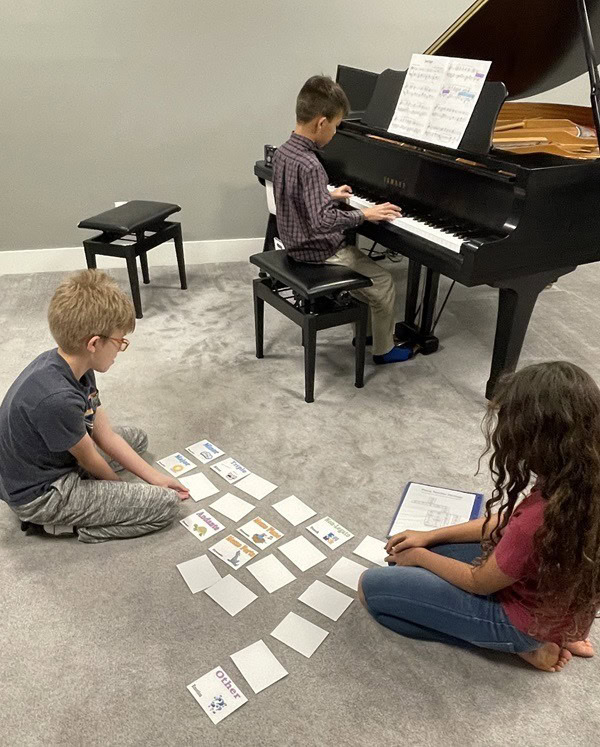
Years ago, one of my go-to sites for games and activities was Jennifer Fink’s Pianimation. Unfortunately, the site is now closed, but I continue to use several of her resources, including a set of “Listening Race Cards.”
I’ve used these visual listening cards for years but always felt a few elements were lacking in the original set that I wanted to include – such as the terms Duple vs. Triple when talking about a meter and more generalized terms, such as loud vs. soft and separated vs. connected for my very beginners.
Thanks to her inspiration, I finally decided to make my own set of visual listening cards.
These cards are a fun way to help students actively listen to music—especially during group or performance class time. Here’s a photo of some of my students using them (although in this photo, it’s Jennifer’s original set with a couple of additions I had made, so it’s not this exact set I’m sharing with you today).

There are four cards per page. I would recommend downloading and printing them in color on white cardstock.









During group classes, I like to assign at least one element to each student and then have them rotate elements for each student’s performance so they get a chance to listen to different things. I have students lay out all the cards from each element/category in front of them and, as they’re listening, turn over all the cards they don’t hear.
The 10-page download includes seven different color-coded categories:
- Tempo (Fast, slow | Adagio, Andante, Moderato, Allegro)
- Meter (Duple, triple)
- Dynamics (Soft, Loud | Pianissimo, Piano, Mezzo Piano, Mezzo Forte, Forte, Fortissimo)
- Articulation (Separated, Connected | Non-Legato, Legato, Staccato, Accent)
- Tonality (Major, Minor)
- Mood (Happy, Excited, Sad, Calm, Mysterious, Angry, Other)
- Register (High, Middle, Low)
Click here to add this resource to your cart, or find it in the Piano Pantry shop.